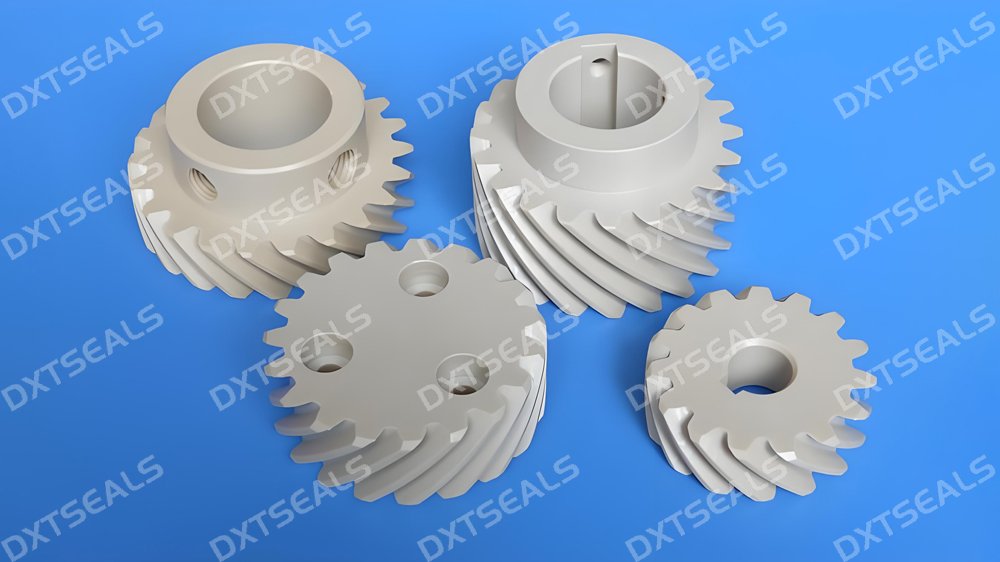
When it comes to sealing components such as bushings, backup rings, or guide rings, the choice of material determines reliability, durability, and performance. While general plastics (like PE, PP, or PVC) are widely used, engineering plastics (such as PTFE, POM, PA, or PEEK) are increasingly preferred in demanding applications.
In this article, DXTSEALS analyzes the differences between engineering plastics and general plastics in sealing applications, helping you make the right selection for your system.
1. Mechanical Strength and Load-Bearing Capacity
-
General Plastics: Usually have lower tensile strength and wear resistance. For example, PE or PP may deform under continuous load.
-
Engineering Plastics: Materials like POM (Acetal) or PA (Nylon) provide higher stiffness, dimensional stability, and load resistance, making them suitable for dynamic sealing structures.
✅ Tip from DXTSEALS: For components exposed to friction and load, engineering plastics outperform general plastics by ensuring long-term shape retention.
2. Temperature Resistance
-
General Plastics: Limited working range, typically -20°C to 80°C. Beyond this, they soften, deform, or crack.
-
Engineering Plastics: PTFE, PEEK, and PPS maintain excellent performance up to 250°C or even higher, suitable for high-temperature sealing systems.
✅ Tip from DXTSEALS: In automotive, chemical, or oilfield applications, high-performance plastics like PTFE or PEEK should be prioritized.
3. Chemical Resistance
-
General Plastics: PE and PP are resistant to many chemicals but fail in solvents or oils.
-
Engineering Plastics: PTFE offers nearly universal chemical resistance, while POM and PA resist fuels, lubricants, and hydraulic fluids.
✅ Tip from DXTSEALS: Always match material to the working medium. For aggressive chemicals, PTFE is the safest choice.
4. Wear and Friction Behavior
-
General Plastics: Poor wear resistance; surfaces may degrade quickly in moving applications.
-
Engineering Plastics: PTFE, POM, and PA feature low friction coefficients, ensuring smooth operation and longer service life in dynamic sealing environments.
✅ Tip from DXTSEALS: In rotary and reciprocating seals, engineering plastics significantly extend component lifespan.
5. Cost vs. Performance Balance
-
General Plastics: Lower cost, suitable for low-demand sealing parts.
-
Engineering Plastics: Higher cost, but superior in high-demand environments where downtime and replacement costs are critical.
✅ Tip from DXTSEALS: Evaluate total lifecycle cost rather than upfront price—engineering plastics often reduce maintenance and downtime costs.
Conclusion
-
General plastics are suitable for low-stress, low-temperature, and cost-sensitive applications.
-
Engineering plastics deliver enhanced performance in sealing components, especially under high pressure, high temperature, and aggressive media.
At DXTSEALS, we provide custom sealing solutions using a wide range of engineering plastics, including PTFE, PEEK, POM, and PA, designed to match specific industry requirements.
📩 Contact DXTSEALS for expert guidance on choosing the right plastic material for your sealing components.
